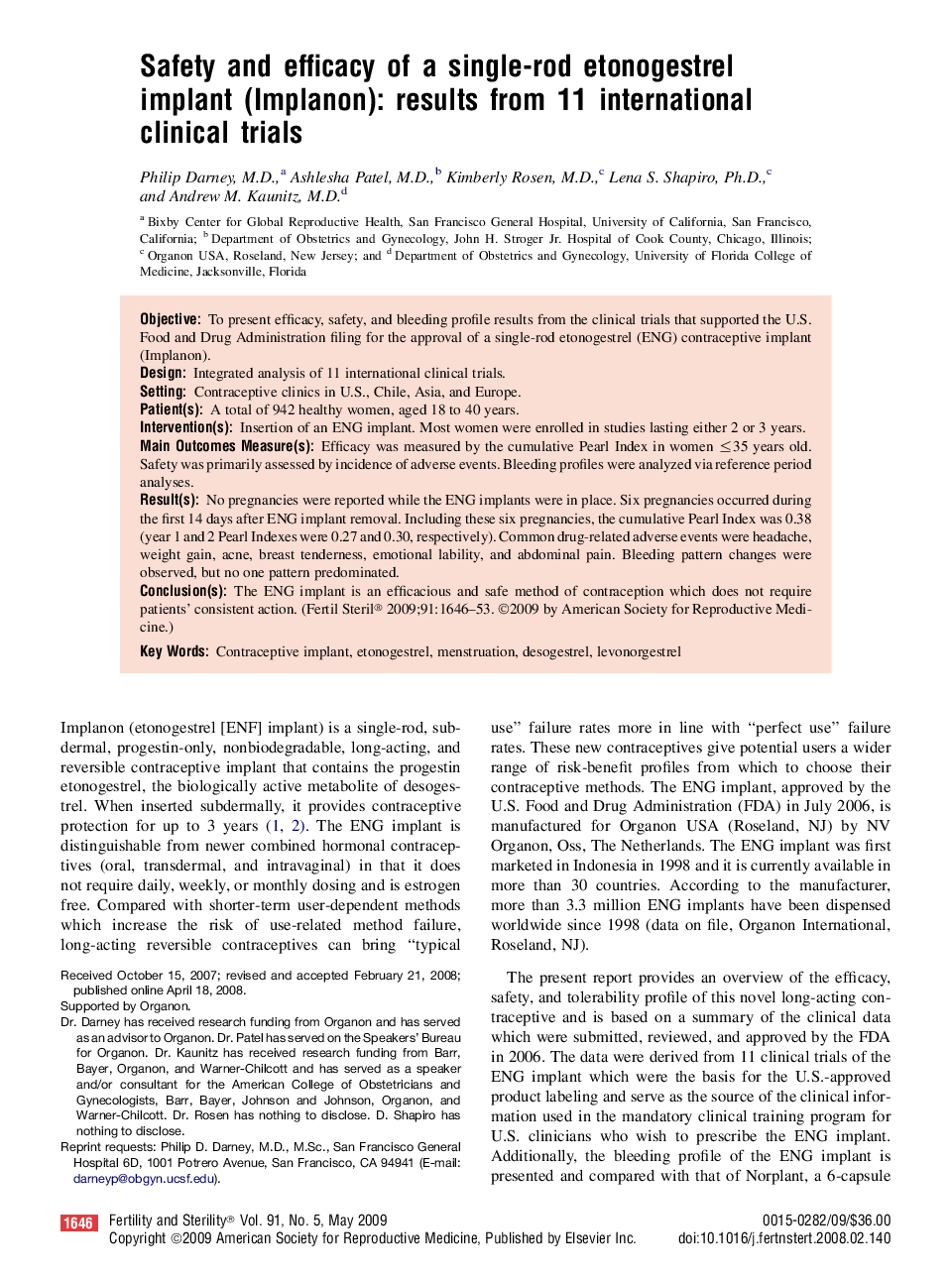| Article ID | Journal | Published Year | Pages | File Type |
|---|---|---|---|---|
| 3938649 | Fertility and Sterility | 2009 | 8 Pages |
ObjectiveTo present efficacy, safety, and bleeding profile results from the clinical trials that supported the U.S. Food and Drug Administration filing for the approval of a single-rod etonogestrel (ENG) contraceptive implant (Implanon).DesignIntegrated analysis of 11 international clinical trials.SettingContraceptive clinics in U.S., Chile, Asia, and Europe.Patient(s)A total of 942 healthy women, aged 18 to 40 years.Intervention(s)Insertion of an ENG implant. Most women were enrolled in studies lasting either 2 or 3 years.Main Outcomes Measure(s)Efficacy was measured by the cumulative Pearl Index in women ≤35 years old. Safety was primarily assessed by incidence of adverse events. Bleeding profiles were analyzed via reference period analyses.Result(s)No pregnancies were reported while the ENG implants were in place. Six pregnancies occurred during the first 14 days after ENG implant removal. Including these six pregnancies, the cumulative Pearl Index was 0.38 (year 1 and 2 Pearl Indexes were 0.27 and 0.30, respectively). Common drug-related adverse events were headache, weight gain, acne, breast tenderness, emotional lability, and abdominal pain. Bleeding pattern changes were observed, but no one pattern predominated.Conclusion(s)The ENG implant is an efficacious and safe method of contraception which does not require patients' consistent action.
